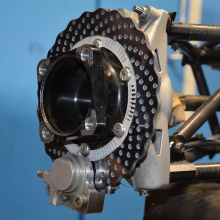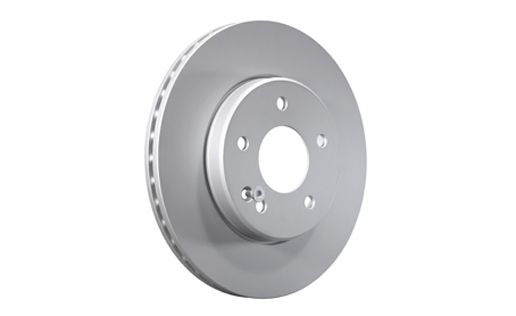Thermal spray coatings used to enhance thermal productivity of the systems to increase the working temperature and to improve corrosion oxidization or wear behavior 4 5 provide a good engineering ap proach for surface compound characteristics 6 7.
Thermally sprayed ceramic coatings as friction surfaces of brake rotors.
Pdf on sep 21 2017 septimiu popa and others published thermal spray ceramic coatings as friction surfaces of brake rotors find read and cite all the research you need on researchgate.
Cite this paper as.
Popa s gadow r killinger a.
Gadow r popa s killinger a.
Eb2016 mds 021 thermally sprayed ceramic coatings as friction surfaces of brake rotors 1popa septimiu 1gadow rainer 2schirmerflorian 1university stuttgart institute for manufacturing technologies of ceramic components and composites allmandring 7b stuttgart d 70569 germany.
This exposes a ring of steel where the brake pad and the brake rotor meet.
Thermal sprayed ceramic coatings for brake rotors provide the ability to individually tailor brake properties while reducing brake disc wear corrosion and brake particulate emissions in the present project the lightweight potential is used for a braking concept in which ceramic high performance coatings are applied to steel and light alloys.
A lightweight brake rotor has been developed based on a metal matrix composite mmc disc.
2017 thermal spray ceramic coatings as friction surfaces of brake rotors.
Uniform and stable friction movement 3.
Its surface is normalised by the application of a thermally sprayed coating that is compatible with current brake pad technology.
Can be ground to a 15 20 µin ra surface finish or superfinished to 5 µin ra.
Eds 8th international munich chassis symposium 2017.
San ford and jain 8 and blau et al.
Very dense to porous depending on application requirements.
Cite this paper as.
Coatings typically have a 150 microinch ra as sprayed finish.
When the rotor is used on the vehicle for the first time the layer of geomet over the braking surface is easily rubbed away by friction.
After the coating cures it ends up as a thin dry film approximately 8 micrometers thick and gives the rotor a metallic silver look.
Typical thickness of 0 003 to 0 030 hard ceramic coating materials.








